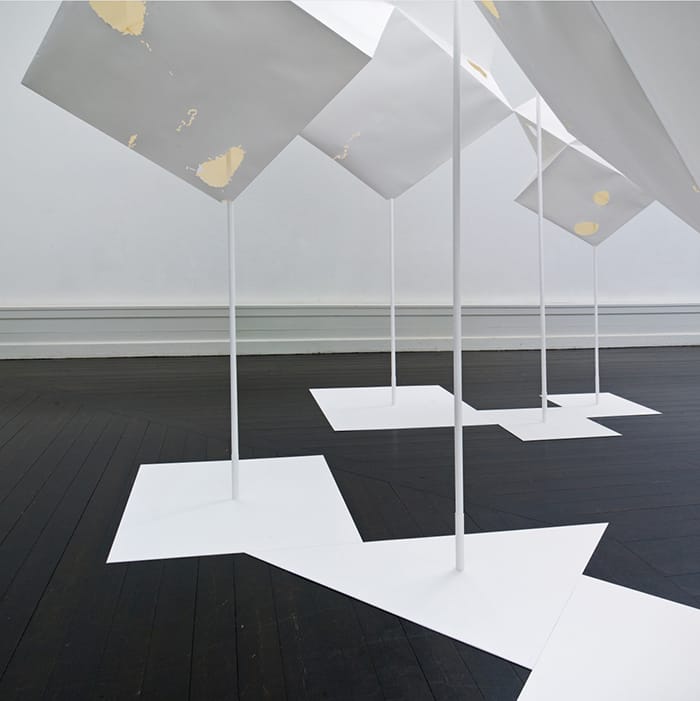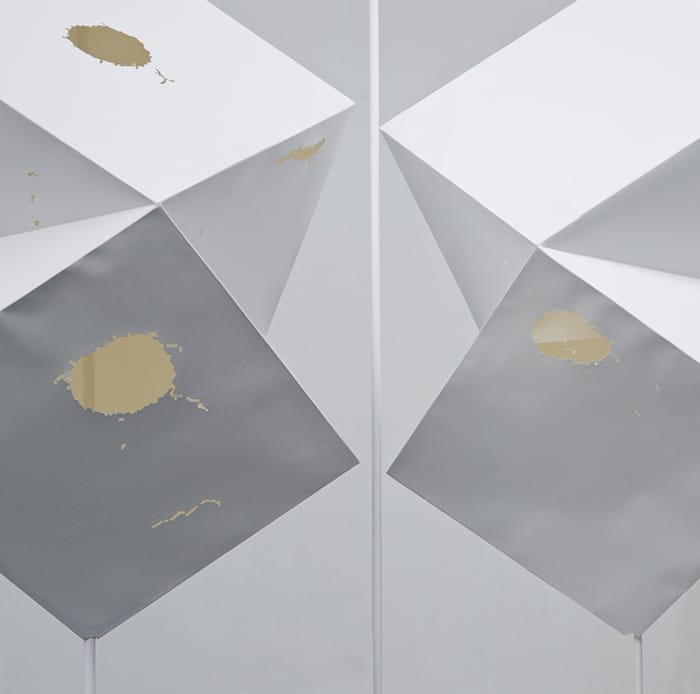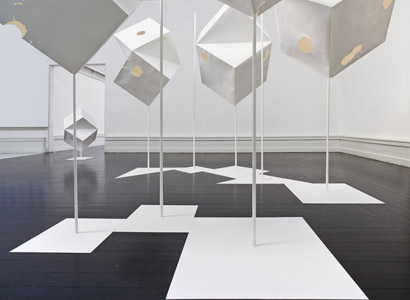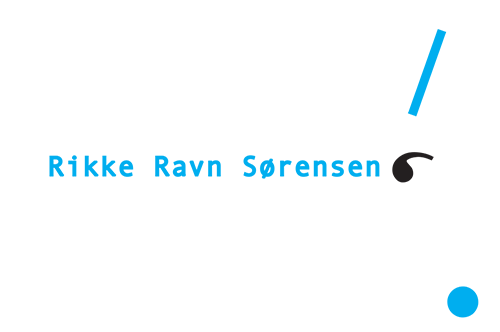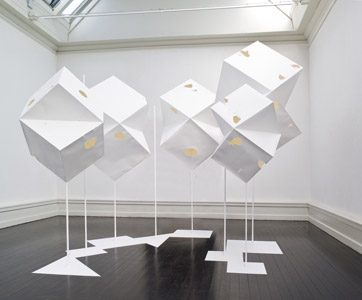
Sound of Shapes
2012
Materiale: Tegnepapir, rundstokke, jern.
Den Frie udstillingsbygning.
Fotograf: Jens Markus Lindhe
Tak til Billedkunstrådet
Denne tekst på dansk
In Sound of Shapes paper is the material of possibilities.
Extended between concept and sensuous shape the work describes
formation as well as deterioration. Perforations, small
imprecisions and the frailty of the material evoke a notion of
a faltering symmetry under attack.
Here it is not just about geometry’s dealings with the ideal, but just as much about
physical, material, and sometimes blemished, forms reached
through experimentation.
White is the most reflective and perhaps also the most fragile of
all the colors, and the work is noticeably shaped and tinged by
the light of the surroundings. Exhibition spaces typically strive
for a pure and cubic neutrality, but here an active mirroring, or
resonance, is taking place between the sculptures and the space.
Even the smallest nuances and displacements become significant,
and these crystalline, scintillating shapes become almost sonic
in their exchange with the surrounding space. Or is it a visual
image?
A row of trees – or a small garden – sustained by form and
sentiment, but at the same time temporary and already about to
disappear, because sensory impressions are ephemeral and paper so
easily withers.
The notion of interchangeability is enhanced by how evident the
process is in the work: The same basic shapes – polyhedron, pole
and base – are repeated in different scales. The tension between
an ideal and its fragile physical manifestation is a discernible
intellectual aspect. However, the actual experience of the work
is both very physical and very real. In these sculptural objects
by Rikke Ravn Sørensen the tension between conceptual thinking
and sense perception is deliberately upheld. This is not an
artwork with a message in the traditional sense. Rather, it is
reminiscent of all of the ways of conceiving and perceiving the
world which we are all engaged in: A process where different
structures appear and disappear, forever mutable and wavering
between impermanence and something more perennial.
Rasmus Kjærboe
Art historian, M. A.
